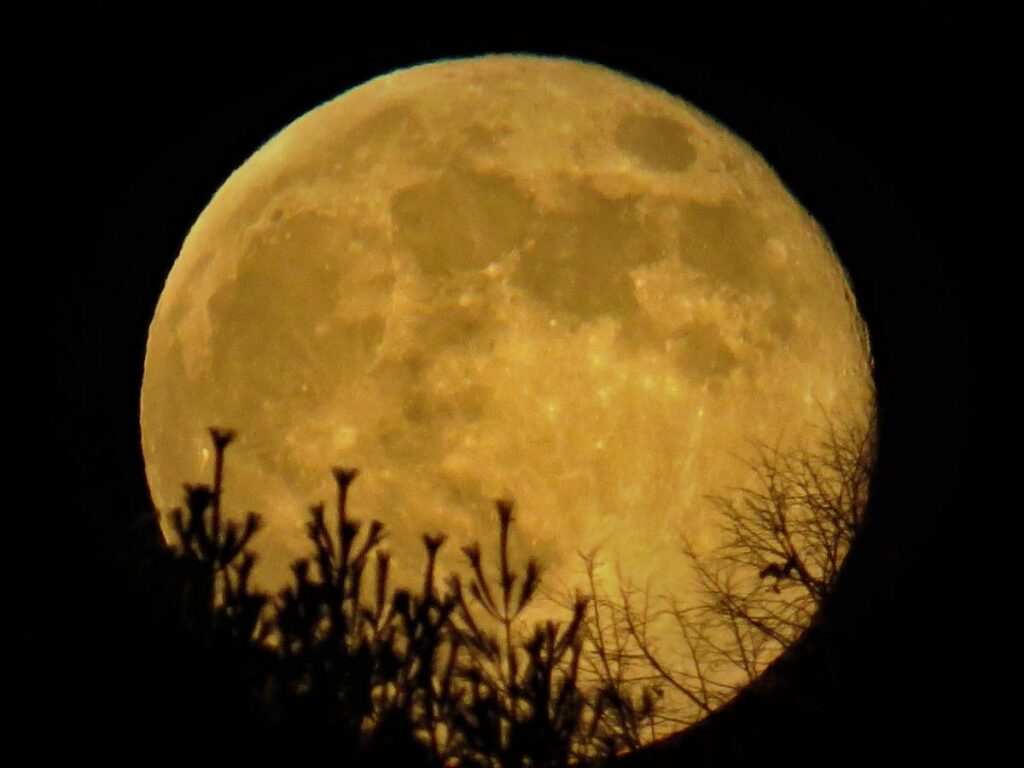The November 2024 full moon, known as the Beaver Moon, is anticipated to be a supermoon, making it appear larger and brighter than usual. Scheduled for its peak fullness on Friday, November 15, at 3:29 p.m. CST, this moon will be visible as a vibrant spectacle throughout the nights of Thursday and Saturday. Space.com notes that as it rises in the east around sunset, reaches its zenith around midnight, and sets in the west near sunrise, stargazers can indulge in viewing this wonderful celestial event. This Beaver Moon is particularly special as it will be the last of four consecutive supermoons observed in 2024, following the blue moon in August, the harvest moon in September, and the hunter’s moon in October.
The Beaver Moon has its origins rooted in the traditions of Native American tribes and early European settlers, as documented in the Old Farmer’s Almanac. It derives its name from the time of year when beavers prepare for winter by building their dams and homes. That period coincides with an opportune time for trapping beavers before the water freezes, ensuring a sufficient supply of warm furs for winter. Notably, if the November full moon occurs before November 7, it is referred to as the hunter’s moon, illustrating a rich cultural significance in naming conventions observed in various tribal traditions.
Different Native American tribes have assigned their interpretations to the Beaver Moon, reflecting local ecological phenomena. For example, the Cheyenne tribe of the Great Plains calls it the Deer Rutting Moon, while the Choctaw tribe of the Southeastern region refers to it as the Panther Moon. Other designations include the Fledgling Hawk Moon from the Hopi, the Turkey Moon from the Potawatomi, and the Frost Moon from the Assiniboine tribe, each representing unique cultural views related to the lunar cycle and seasonal changes.
The phenomenon of a supermoon occurs when the full moon coincides with its perigee, meaning it is at its closest point to Earth in its elliptical orbit. During this alignment, the moon can be approximately 224,895 miles away from Earth, resulting in a more luminous and expansive appearance, roughly 7% larger and 15% brighter than a typical full moon. NASA notes that various publications may have different criteria for defining a supermoon, further complicating the classification of these lunar events. Contrastingly, a full moon at apogee, its farthest point from Earth, is referred to as a micromoon, making the understanding of celestial distances vital for enthusiasts pondering over lunar aesthetics.
Following the Beaver Moon, the final full moon of the year will be the Cold Moon, which is set to peak on December 15. Named by the Mohawk tribe due to the chill that permeates this time of year, the Cold Moon will not be classified as a supermoon unlike its predecessors. The Cold Moon captivates its audience as it rises majestically, marking the onset of winter’s grip across various regions. Observers are encouraged to savor the beauty of each full moon and the different characteristics they embody depending on the time of year.
For those interested in a full moon schedule for 2024, the list showcases all lunar phases along with their respective native names. These include the Wolf Moon in January, the Snow Moon in February, the Worm Moon in March, followed by the Pink Moon in April, the Flower Moon in May, and continuing through to the Beaver Moon and the Cold Moon in December. As the lunar calendar carries on, attendees can look forward to the next set of supermoons in 2025, which are projected to occur three times. Each full moon not only offers a glimpse of celestial beauty but also serves as a reminder of the intricate ties between culture, nature, and the cosmos.

